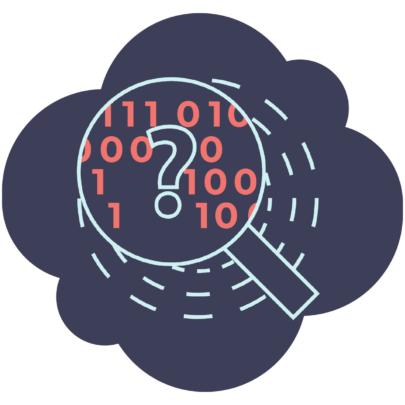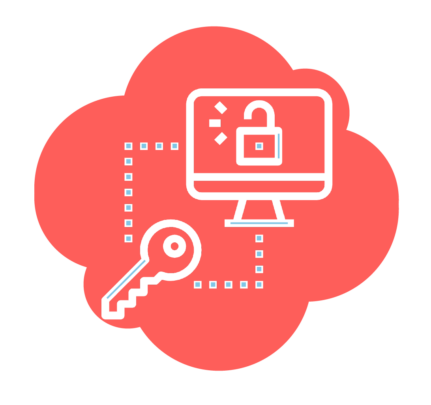Understanding Your Business Data: 4 Questions You Should Ask
The world is swimming in data! Even the smallest companies, after many years of networking and cloud use, can be harboring millions of megabytes of information — records, backups, past projects, website metrics and network use. It’s hard to get our heads around it. Our use of data has become so sophisticated that universities now offer degrees in data management.
The analysis and use of data to make business-driven decisions is often referred to as “business intelligence.” This discipline includes initiatives such as reporting, analytics, user dashboards, event processing and data mining, as well as business performance management through disciplines such as benchmarking and data set comparison. If you own or manage a small or medium-size business, keeping all that data safe and applying proper business intelligence practices to it can be a serious challenge.
But, if you do figure out how to manage it well, there are gems of information and wisdom in your data that can help ensure your business thrives and stays as competitive as possible and improve efficiencies.
The question is — how do you get to all that data? How do you keep it safe? And how do you determine how to best use it? A managed services provider (MSP) can help you establish a thorough business intelligence plan and provide management of it for you as an extension of your staff. Many small and medium sized businesses have some difficulty calculating ROI for this service—it seems cheaper to do it yourself. Some already have a provider and believe their data is being managed expertly, but the systems and processes the provider is using are outdated or incomplete. It comes down to this: Understanding the questions you should be asking about your data. This article outlines the top 4 questions you need to ask your Managed IT Provider.
The 4 Questions You Need to Ask
1. Where is our data?
Most enterprises still aren’t aware of all the individual devices that contain data belonging to the business. It can be difficult to gain a clear grasp on how data moves from your on-site network to personal cell phones and computers, laptops taken out of the building, vendor networks and cloud folders. Prime Secured’s VP of Information Technology, Dave McCollough, explained, “If you don’t know where your data is or whether it is going ‘out in the wild,’ it could leave your sensitive information exposed to bad actors, and if it gets into the wrong hands, it could be costly.”

On the positive side, understanding where your data is and how to use it to your best advantage can give your organization a competitive edge. What data about your customers do you have sitting in the depths of your system that could be used to make your next marketing campaign more successful? How can you access the metrics for your business’ profitability to client loyalty?
Many small and medium-size businesses don’t have the expertise — or the time — to thoroughly catalog all their data and understand links to all devices. “It’s not cost-effective for a CEO to spend days managing data folders, even if they do have the knowledge,” McCollough said. “But the truth is, most CEOs and others who are given authority over data in small and medium-size businesses don’t really have the expertise to manage it well.” He explained that hiring a knowledgeable expert in-house can be too expensive for many smaller businesses—and those that do must then depend only on the skillset and experience of that one person.
Ask your MSP to write a clear data map showing all devices, all potential links, and how data moves through all of it. In addition, they should provide you with a plan for ongoing monitoring and management of all devices and depositories that could potentially be linked to your system.
2. Who can access our data?
It’s one thing to know where your data resides and quite another to understand exactly how hackers can get to it — or, when your team needs the data, how they might find it difficult to get. Successfully managing business intelligence requires both (1) protecting data from bad actors and (2) making it easy for you and your team to get to it and make decisions based on what’s in all your data depositories.

First, from a security standpoint, users are the weakest link in the chain, but technology offers many ways to control access. Multifactor authentication, for example, has become extremely important. Many business owners don’t realize how common it is for passwords that have been set by individuals to end up on the dark web, where they can be used by hackers. Justin Ekstein, Prime Secured’s Solution Engineer, explains: “With multifactor authentication, even if a password is leaked, the perpetrator won’t have your cellphone, which makes it much more difficult to get to your data.”
Second, when it’s time for your team to access data, do they know how to get there? Creating a logical and easy-to-navigate data hierarchy, perhaps through a well-thought-out user dashboard, makes it easier for everyone in-house to get to the data they need and ensures nothing useful sits unused for years. Your data repositories should be periodically updated and cleaned out.
Ask your managed services provider to review and update your data hierarchy. Once your data is set up where it can be easily and safely accessed by your team, your MSP should be willing and able to provide thorough training, including security simulations.
3. How can we ensure our data is secure?
This is a topic unto itself, and we will address it more fully in an additional article about security and managed services providers. For now, think generally about how your data is secured. At the very least, you probably know you should have an antivirus system in place. However, according to Ekstein, many small and medium businesses are not aware that traditional antivirus programs often are useless now because they are outdated — or the hardware they are used on is outdated.

This is even more important at this time in history because of the proliferation of remote workers. Proper security of business data requires establishing regular best-of-class patching services and regularly updating software. You need to know how remote workers are connecting and how they are using the data. “Not knowing amounts to leaving the security of your system up to chance,” Ekstein said. “At the very least, when remote workers connect to your network, they might be bringing in some kind of sludge along with them inadvertently.”
Many companies still have basic antivirus programs that are based on definitions of viruses they’ve seen before and software packages that might be vulnerable. “In the last couple of years, there are so many new threats, and they are all so different,” Ekstein said. “You have to have a solution that has the ability to look at behaviors instead of whether it’s a good software package.” This type of security software is called Endpoint Detection and Response (EDR).
Part of having a well-appointed IT security system is determining whether you have robust backups to completely recover your system after a hack or even a physical disaster. “Just because you have backups, doesn’t mean they’re working,” Ekstein said. “They need to be regularly tested, and keep in mind that not all cloud services are backed up equally or are not easily restorable.” Don’t be fooled by the idea that your data is not important to anyone else and therefore a hacker wouldn’t be able to use it to make any money. If a hacker uses ransomware to lock down information that’s valuable to your organization, you could find yourself in a position where you must pay tens of thousands of dollars to retrieve your entire company history. The loss of customer information, for example, could damage your organization’s reputation.
Ask your MSP to identify specific programs being used to keep your network safe and then explain to you exactly how it all fits together. To keep your network safe going forward, require your MSP to draft a plan for continual monitoring and disaster recovery. In addition to establishing a chain of command to make decisions about security, you should define actions you trust your MSP to take on your behalf immediately. “A disaster recovery plan needs to be a living document,” McCollough pointed out. “Don’t just write it and let it sit — test it on a regular basis.”

4. What's in it for you?
Small and medium businesses are known for their impressive resourcefulness and the ability of employees to wear many hats, learn new things and take on challenging roles. In fact, many small and medium business have seemingly achieved the impossible through sheer will! But these days a company’s data is too important to learn on the fly.
It’s easy to believe meticulous monitoring of your network is not that important. After all, you may tell yourself, you’ve been okay up to now, haven’t you? You may not have experienced a negative event yet, but the general consensus is that it is just a matter of time for any organization. You may already have a process in place for making data and business intelligence decisions, but if data is not your specialty you likely have gaps in your system that could cause devastating problems. Also, you have other things to do — how can you keep up with everything you need to know in the fast-moving world of data management and security?
Perhaps you already have an MSP that monitors your system. That’s a great first step, but don’t let it be a “set it and forget it process.” Learn enough about it to ask intelligent questions. Does your provider include training, data mapping and regular proactive reporting as part of its regular services? Is your MSP equipped to help you create a data access plan and easy-to-use hierarchy, so you can use your data to its best advantage? Don’t think of your MSP service as only “security services”—there is much more value to be tapped.
Ask your MSP to document exactly what you are getting from them. They should not only provide software, hardware and monitoring. They should help you strategize, then set everything up and administer it on a continual basis, helping you look at your data clearly and make good decisions. Backups should be checked daily. Security breaches should be continually ferreted out and fixed using the latest hardware and software, including training and testing your team. No useful data should linger unnecessarily in the depths of your network!
Benefits of Working with A Data-Intelligence-Equipped MSP
When was your data last backed up and reorganized? Is your antivirus updated? Many companies don’t address these issues until a disaster turns their attention forcefully to the inner workings of their business intelligence systems. But the exposure of data can cause irreparable harm in a company’s financial stability – and even its reputation if sensitive data such as customer information is lost.
“The best time to examine your data, business intelligence tools and potential exposures is before something bad happens,” McCollough said. “Every company should create a roadmap of its technology for the next three to five years.” If it can’t be done thoroughly in-house, using knowledge of the latest technology both for hacking and fighting against hacking, then you may want to reach out to an agile, professional MSP such as Prime Managed.
Both Ekstein and McCollough are members of a comprehensive new Prime MSP division. They bring decades of experience with them in a wide variety of managed services issues and solutions. Prime customers look to them as Chief Information Officers or Chief Security Officers on call. Working with an outside MSP team can be even better than hiring someone in-house; you get the benefit of a highly experienced team at a reasonable cost, as well as access to the best hardware and software—and the combined metrics of years-worth of multiple customers’ experiences with data and business intelligence.
“All of the services discussed in this article, and more are in our toolbox for Prime Managed clients,” Ekstein said. “We look at your specific situation and tailor a plan to your needs—we don’t just offer what is easiest for us to do.” Other Prime divisions support the MSP division with complementary targeted services in structured cabling and DAS-installations, physical security solutions, and network solutions. When you hire Prime, you get the benefit of a full team of professionals with specialties in many different network, security, and communications disciplines.
For more information about Prime Managed and a free initial meeting to discuss your data and business intelligence needs, call 402-289-4126 or visit primemanaged.com




